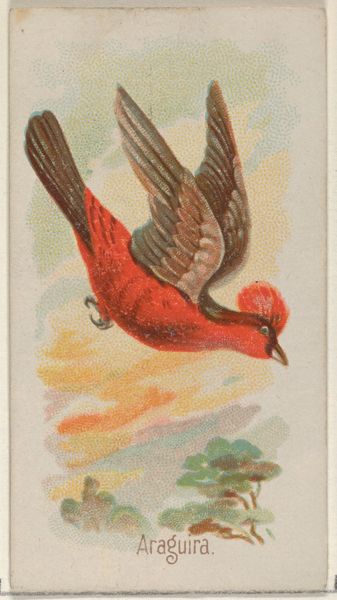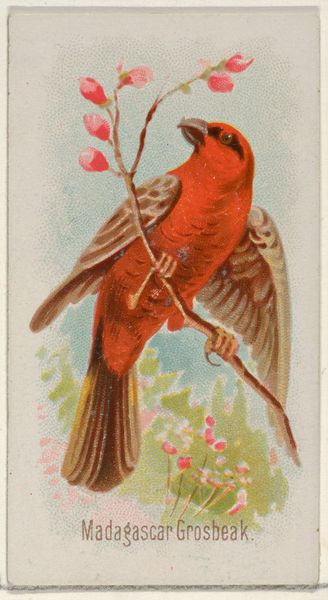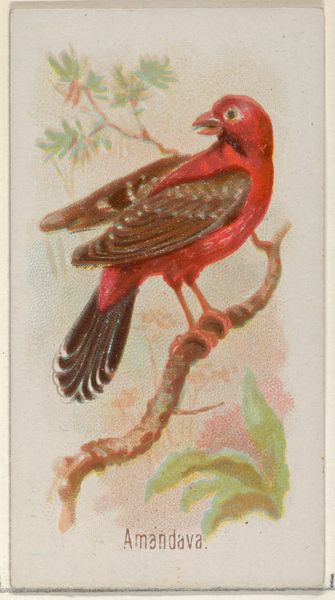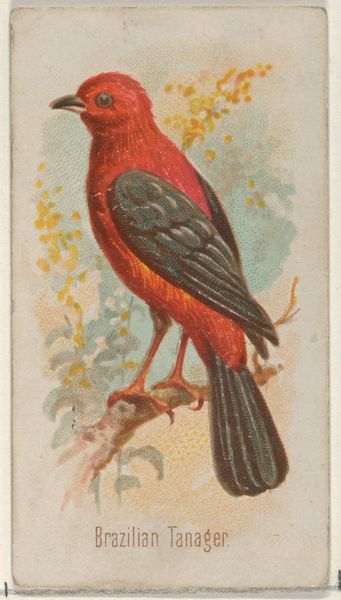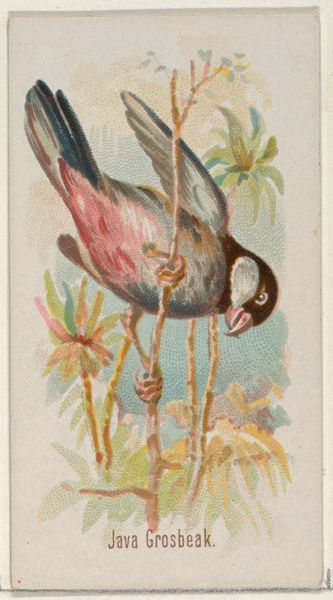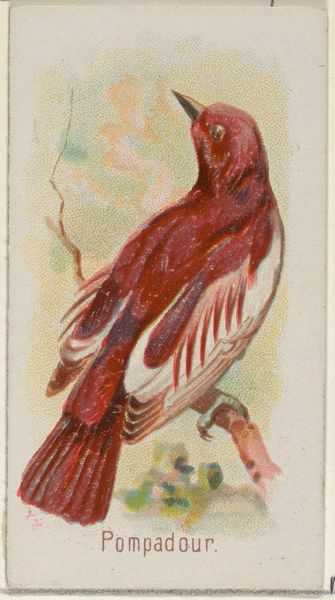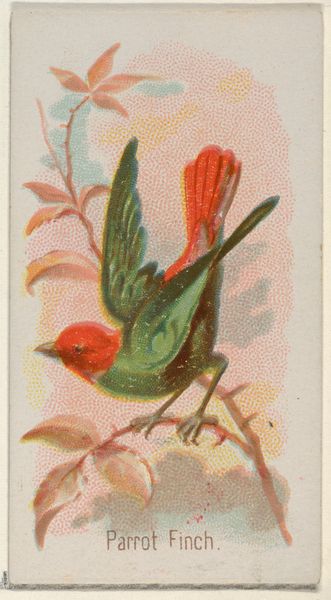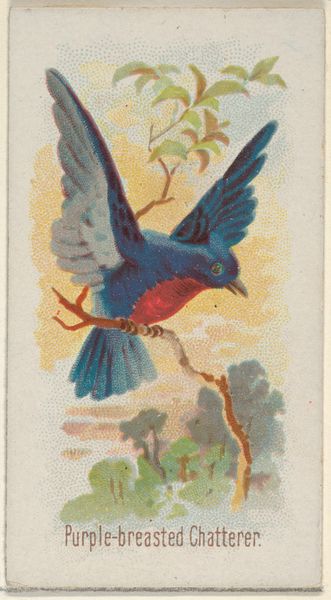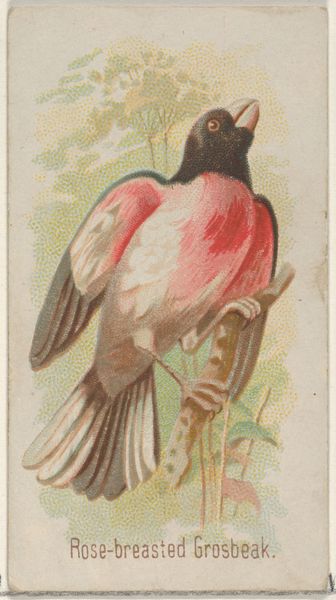
Pine Grosbeak, from the Song Birds of the World series (N23) for Allen & Ginter Cigarettes 1890
0:00
0:00
drawing, coloured-pencil, print, watercolor
#
drawing
#
coloured-pencil
#
water colours
# print
#
impressionism
#
watercolor
#
coloured pencil
Dimensions: Sheet: 2 3/4 x 1 1/2 in. (7 x 3.8 cm)
Copyright: Public Domain
Curator: Here we have a card titled "Pine Grosbeak" from the "Song Birds of the World" series. Allen & Ginter produced these around 1890, initially as small collectibles packaged with their cigarettes. It's crafted using drawing and printmaking techniques incorporating watercolor and colored pencil. Editor: It’s gorgeous! The bird almost seems to flutter off the card. There's a lovely sense of immediacy to it, capturing this fleeting moment in nature. Curator: These cards represent a fascinating intersection of consumer culture and natural history, offering a glimpse into late 19th-century popular interests. The mass production also reveals how industries capitalized on circulating knowledge through visual media. Editor: Totally! I can almost feel the artist watching this bird through the branches. Did these function as like... field guides? Before, you know, proper photography? Curator: In a way, yes. But more broadly, these types of cards created cultural ideas about the natural world tied to specific imperial and capitalist structures. These depictions, beautiful as they are, participate in constructing how we perceive nature. They often omit the crucial impact of colonization on these ecologies and species. Editor: It’s such a pretty rendering though. It also reminds me of the Victorian obsession with classifying everything. What kind of social values got mixed into the popular science on the cards, do you think? Curator: I think anxieties about industrialization and rapid change played a role. By categorizing the natural world, they hoped to create a sense of order. Moreover, there is something to be said about the ethics surrounding the production of collectables using natural life. These cards highlight shifting relationships between humans and animals under accelerated consumption practices. Editor: Definitely gives you pause. Something about seeing this bird made for commercial means that does bring into question our relationship to our environments. But I do love it's caught mid-flight—there's joy in seeing something represented so beautifully. Curator: I agree. They capture a unique aesthetic from the era, which, in turn, also becomes something to critically study as part of visual culture. Editor: Well, that's certainly given me something to chew on!
Comments
No comments
Be the first to comment and join the conversation on the ultimate creative platform.
